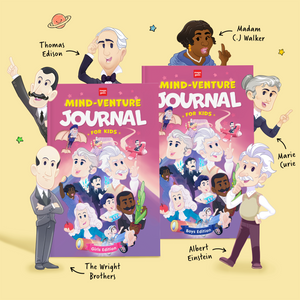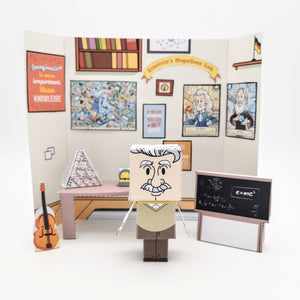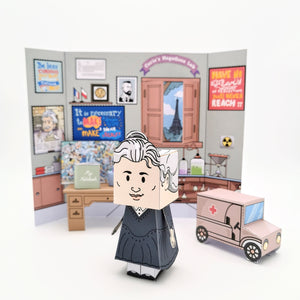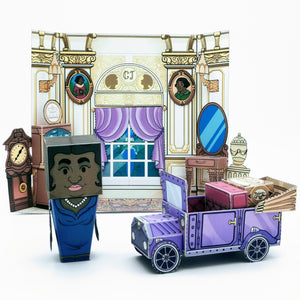Alexander Graham Bell for Kids: The Amazing Story of a Famous Inventor
Did you know that the famous inventor of the telephone, Alexander Graham Bell, once taught a dog to "speak"? Jump into the amazing life of a super-smart inventor! Find out cool stories, awesome inventions, and fun secrets that made him a hero in history.
- Born: March 3, 1847
- Died: August 2, 1922 (age 75 years)
- Nationality: Scottish-Canadian-American
- Education: University of Edinburgh, University College London
- Occupation: Inventor, scientist, teacher of the deaf
- Best Known for: Inventing the telephone
Table of Contents
- A Young Inventor in the Making: Alexander's Early Years
- The Journey to America: A New Life in a New Land
- Alexander Graham Bell's Lifelong Passion: Helping the Deaf
- The Birth of the Telephone: Alexander Graham Bell's Most Famous Invention
- The Bell Telephone Company: Connecting the World
- The Personal Side of Alexander Graham Bell: Family Life and Lasting Love
- Beyond the Telephone: Alexander Graham Bell's Other Remarkable Inventions
- The Final Chapter: Alexander Graham Bell's Later Years and Legacy
- Alexander Graham Bell's Famous Quotes
- Alexander Graham Bell Facts
- Frequently Asked Questions (FAQ)
A Young Inventor in the Making: Alexander's Early Years
Alexander's Early Years
Alexander Graham Bell was born on March 3, 1847, in Edinburgh, Scotland. As a young boy, he felt left out because both his brothers had middle names, so he asked his father, Alexander Melville Bell, for one too. On his 11th birthday, he received a special gift – the middle name "Graham" in honor of a family friend, Alexander Graham, whom he admired. This name quickly became a cherished part of his identity. Alexander, or "Alec" as his family and friends called him, had a special connection to the world of communication from a young age. Both his mother, Eliza Grace Symonds Bell, and his father played important roles in shaping his interests and talents.
Family Background
Alec's mother was an accomplished pianist, despite being nearly deaf. Her ability to communicate through music inspired young Alec to explore new ways of helping people with hearing problems. His dad, Alexander Melville Bell, was a famous speech teacher. He made an amazing thing called Visible Speech to help deaf people learn how to talk. This exposure to teaching speech sparked Alec's lifelong passion for helping the deaf community.
Childhood Inventions
Growing up, Alexander Bell was surrounded by a family of inventors and scholars. This environment fueled his curiosity and creativity, leading him to develop a love for invention at a very early stage in his life. One of his first inventions was a simple "talking" machine that tried to imitate a human voice. He made it with some wire and a couple of tin cans, inspired by observing birds and their vocalizations. He also constructed a miniature windmill and experimented with various flying contraptions.

As a child, Alec was homeschooled by his mother, who taught him the importance of curiosity and learning. She encouraged him to explore the world around him and never fear asking questions or making mistakes. These early lessons would go on to shape the man he would become, as well as the incredible innovations he would bring to the world.
The Journey to America: A New Life in a New Land
Move to America
In 1870, when Alexander Graham Bell was 23 years old, his family decided to leave Scotland and embark on an exciting adventure to North America. They settled in the picturesque town of Brantford, Ontario, in Canada. This move was not only a new beginning for the Bell family but also an opportunity for Alexander to explore new horizons and expand his knowledge.
Life in Canada
Life in Canada was a stark contrast to the busy streets of Edinburgh. The tranquil beauty of the countryside inspired Bell to pursue his love for invention and learning even more fervently. During this time, he continued to work on his ideas, including an early version of the telephone that would eventually change the world.
Life in Boston
In 1872, Bell's journey took him further south, to the bustling city of Boston in the United States. There, he found a job as a teacher of the deaf at the Boston School for Deaf Mutes, later known as the Horace Mann School for the Deaf. This new role allowed him to make a difference in the lives of his students while also pursuing his own research and inventions.
As Bell's reputation grew, he was invited to give lectures and demonstrations on communication devices at the prestigious Massachusetts Institute of Technology (MIT). It was during this time that he met Thomas Watson, a young electrical engineer who would become his trusted partner in developing the telephone.
Meanwhile, the city of San Francisco, on the other side of the country, was experiencing a period of rapid growth and innovation. As the world marveled at the newly completed Transcontinental Railroad, Bell couldn't help but dream of a day when people could communicate across vast distances with the help of his inventions.
In the years that followed, Alexander Graham Bell's life in America would be marked by incredible achievements and lasting friendships. He was determined to create technologies that would connect people, improve lives, and transform the world as we know it. Little did he know that he was just getting started on an extraordinary journey that would make him a household name and a legend in the annals of history.
Alexander Graham Bell's Lifelong Passion: Helping the Deaf
Helping the Deaf
Throughout his life, Alexander Graham Bell maintained a strong commitment to helping the deaf community. This passion was rooted in his childhood experiences with his mother and father, as well as his innate desire to make a positive impact on people's lives.
Meeting Mabel Hubbard
In 1871, Bell established a school for the deaf in Boston, which later became part of Boston University. As a professor of vocal physiology and elocution, he invented techniques of teaching speech to the deaf and developing innovative methods to make communication easier for them. One of these methods was his invention of techniques to detect hearing problems early in a child's life, potentially preventing further hearing loss.
During his time in Boston, Bell met Mabel Gardiner Hubbard, a young woman who had become deaf due to a bout of scarlet fever. They quickly fell in love, and their shared experiences with deafness only strengthened their bond. In 1877, Bell and Mabel were married, and she became a driving force behind many of his inventions and achievements.
Advocacy Work
Bell's work extended beyond the classroom, as he also became involved with the American Association for the Promotion of the Teaching of Speech to the Deaf (now known as the Alexander Graham Bell Association for the Deaf and Hard of Hearing). He served as its president for several years, tirelessly advocating for better education and resources for the deaf community.

Alexander Graham Bell's lifelong passion for helping the deaf community not only shaped his personal life but also played a crucial role in the development of groundbreaking inventions. His unwavering dedication to making a difference in the lives of others stands as a testament to his incredible character and the lasting impact of his work.
The Birth of the Telephone: Alexander Graham Bell's Most Famous Invention
Invention of the Telephone
Alexander Graham Bell's most celebrated invention, the telephone, had humble beginnings. In the early 1870s, Bell was working on an idea to create a device that could send voice signals over a telegraph wire. At the same time, other inventors were racing to invent an acoustic telegraphy system. Bell knew he needed help, so he teamed up with a young electrical engineer named Thomas Watson.
Together, Bell and Watson worked tirelessly in their workshop, experimenting with different methods of transmitting human speech. Finally, on March 10, 1876, their perseverance paid off. Alexander Graham Bell called Thomas Watson from the next room using the first practical telephone. Bell spoke the now-famous first words: "Mr. Watson, come here, I want to see you." Watson heard Bell's voice clearly through the device, and history was made.

Telephone Patent
Securing the patent for the telephone was no easy task. Bell had to navigate a complex web of competing inventors and legal challenges at the Patent Office. Despite these obstacles, he managed to secure the patent just hours before another inventor, Elisha Gray, filed a similar claim. This marked the beginning of a new era in communication, with Alexander Graham Bell at its forefront.
Bell's invention of the telephone not only revolutionized how people communicated but also laid the foundation for a thriving industry.
The Bell Telephone Company: Connecting the World
Bell Telephone Company
Following the invention of the telephone, Alexander Graham Bell and his partners wasted no time in founding the Bell Telephone Company in 1877. This groundbreaking venture aimed to bring the incredible power of long-distance communication to people around the world.
The early days of his company were marked by rapid growth and expansion, as more and more people embraced the revolutionary new technology. Bell's company not only installed telephone lines in homes and businesses but also developed new ways to improve the telephone system, making it more reliable and efficient. These advancements led to the creation of the first long-distance telephone lines and an ever-growing network of connections.
First Transcontinental Call
One of the most notable milestones in the history of his company was the first transcontinental telephone call in 1915. Alexander Graham Bell, who was in New York at the time, called Thomas Watson, who was in San Francisco. This remarkable achievement demonstrated the immense potential of the telephone to bridge vast distances and bring people closer together, even when they were physically thousands of miles apart.
As the company grew, it continued to push the boundaries of what was possible with telephone technology. The Bell Telephone Company, later known as the American Telephone and Telegraph Company (AT&T), played a pivotal role in shaping the future of telecommunications. Today, the legacy of Bell's invention is evident in the global network of connections that allow us to communicate instantly with friends, family, and colleagues all over the world.
The Personal Side of Alexander Graham Bell: Family Life and Lasting Love
Family Life
While Alexander Graham Bell is best known for his groundbreaking inventions, his personal life also holds stories of love, devotion, and family. In 1877, Bell married Mabel Gardiner Hubbard, the daughter of his financial backer, Gardiner Greene Hubbard. Mabel, who had become deaf as a child, was a constant source of inspiration for Bell in his work, as well as a loving and supportive partner.
Together, Alexander and Mabel Bell had four children: two sons, Edward and Robert, and two daughters, Elsie and Marian. Tragically, their sons passed away at a young age, but their daughters went on to lead successful and fulfilling lives. The Bell family shared a strong bond, and their home was filled with love, laughter, and curiosity.
Building a home in Nova Scotia
The Bells built a beautiful summer home in Baddeck, Nova Scotia, called Beinn Bhreagh. It was here that they enjoyed spending time with their children, exploring the great outdoors, and indulging in their shared passion for scientific discovery. They often hosted friends and fellow inventors, sharing ideas and collaborating on new projects.
Mabel Bell was not only an essential part of her husband's personal life but also his professional journey. She was involved in many aspects of Alexander Graham Bell's work, providing valuable input and assistance in the development of the telephone and other inventions. Their partnership was a testament to the power of love, understanding, and shared dreams.
Beyond the Telephone: Alexander Graham Bell's Other Remarkable Inventions
While the telephone is undoubtedly Alexander Graham Bell's most famous invention, his brilliant mind led him to develop numerous other important innovations. His insatiable curiosity and desire to improve people's lives drove him to explore a wide range of fields, from medical devices to aviation.
The HD-4 Hydrofoil: Bell's Watercraft
In 1919, Alexander Graham Bell created the HD-4, a super-fast hydrofoil boat that "flies" over water with special wings below its hull. It broke speed records by traveling over 70 miles per hour. The HD-4's innovative design influenced future boat and ship technologies, showcasing Bell's remarkable ingenuity beyond the telephone.

Metal Detector
One of Bell's lesser-known but equally significant inventions is the metal detector. In 1881, after the assassination attempt on President James Garfield, Bell quickly devised the first metal detector in an effort to locate the bullet lodged inside the president's body. Although the device bell invented, was not successful in this particular case due to interference from the metal bed frame, it laid the groundwork for future metal detection technologies.
Aviation
Bell also made substantial contributions to the field of aviation. Alongside a group of talented engineers, he founded the Aerial Experiment Association in 1907. This organization was dedicated to advancing the development of powered flight, and under Bell's guidance, they created several groundbreaking aircraft designs.
Photophone
Another of Bell's notable inventions is the photophone, a device that allowed the transmission of sound using light beams. Although the technology was ahead of its time and not commercially viable during Bell's lifetime, the photophone is now considered a precursor to modern fiber-optic communication systems.
In addition to these remarkable inventions, Bell conducted research on a variety of other topics, including alternative energy sources, marine biology, and methods for teaching speech to the deaf. His tireless pursuit of knowledge and his ability to think creatively and fearlessly are hallmarks of his extraordinary legacy.
The Final Chapter: Alexander Graham Bell's Later Years and Legacy
Later Years
Alexander Graham Bell continued to work on his many projects and inventions throughout his life, driven by an unrelenting passion for knowledge and discovery. His later years were spent with his beloved wife, Mabel, at their family home in Baddeck, Nova Scotia, where they enjoyed the beauty of nature and the company of friends and family.
Legacy
On August 2, 1922, Alexander Graham Bell passed away at the age of 75. His death marked the end of an extraordinary life filled with groundbreaking achievements and a deep commitment to improving the lives of others. To honor his memory, all telephone service in the United States and Canada was suspended for one minute during his funeral.
Today, Alexander Graham Bell's legacy lives on in the countless innovations and advancements that have grown from his work. His inventions and discoveries have touched nearly every aspect of modern life, from communication and medicine to aviation and energy. His relentless pursuit of knowledge and understanding serves as an inspiration to future generations of inventors, scientists, and dreamers.
- "Mr. Watson, come here, I want to see you." - This is Bell's most famous quote and it was spoken during the first successful telephone call in history. It marked a turning point in human communication, and Bell's invention revolutionized the way we interact with one another.
- "Before anything else, preparation is the key to success." - Bell was a firm believer in preparation and planning. This quote reflects his work ethic and his belief in the importance of hard work and dedication.
- "When one door closes another door opens; but we so often look so long and so regretfully upon the closed door, that we do not see the ones which open for us." - This quote speaks to Bell's optimism and his belief in the power of perseverance. It encourages people to look forward, even in the face of disappointment or failure.
- "Great discoveries and improvements invariably involve the cooperation of many minds." - Bell recognized the importance of collaboration and teamwork in scientific and technological advancements. This quote highlights his belief that progress is made through the collective efforts of many individuals.
- "The inventor...looks upon the world and is not contented with things as they are. He wants to improve whatever he sees, he wants to benefit the world; he is haunted by an idea." - This quote captures Bell's passion for invention and his desire to use his knowledge and skills to make the world a better place. It speaks to his creativity, his curiosity, and his determination to make a difference.
- Taught His Dog to "Speak": Alexander Graham Bell taught his dog, Trouve, to "talk"! He trained the Skye Terrier to growl in a way that sounded like human speech, including words like "mama" and "how are you, grandmama?".
- Early Metal Detector: Bell was one of the first people to work on developing an early version of a metal detector, which he called the "induction balance." He even tried to use it to find an assassin's bullet lodged inside President James Garfield's body.
- Disliked Telephones: Alexander Graham Bell didn't like having a telephone in his office. He believed it was too intrusive and distracting. Quite ironic for the man who invented the telephone, isn't it?
- Visible Speech Machines: Bell experimented with "visible speech" machines, which were devices that could visually represent the sound of human speech. These machines were intended to help deaf people understand spoken language better.
- Advocate for Women's Rights: Alexander Graham Bell and his wife, Mabel, were both advocates for women's rights. They supported women's suffrage, which was the movement for women to have the right to vote.
- Friends with Famous Inventors: Bell was friends with famous inventors such as Thomas Edison and Henry Ford. They would sometimes exchange ideas and even work together on projects.
- Volta Prize Winner: In 1880, Bell won the French Volta Prize for his invention of the telephone. He used the prize money to create the Volta Laboratory, which was dedicated to research on communication devices and methods.
- National Geographic Society: Alexander Graham Bell was one of the founding members of the National Geographic Society, and he even served as its president from 1896 to 1904. He helped develop the society's first illustrated magazine.
- Experiments with Giant Kites: Bell conducted experiments with giant kites, some of which were large enough to carry a person! These experiments eventually led to his interest in building flying machines.
- Held 18 Patents: During his lifetime, Alexander Graham Bell held 18 patents in his name alone and shared 12 others with collaborators. His innovative spirit made him one of the most influential inventors in history.
What are some fun facts about Alexander Graham Bell for kids?
He received his middle name "Graham" as an 11th birthday gift. Nicknamed "Alec" by family and friends. Taught a dog to "speak" using a special device. Experimented with a "visible speech" machine to help deaf people. Invented an early version of the metal detector. Contributed to the development of aviation. Created the photophone, a precursor to fiber-optic communication.
What was Alexander Graham Bell famous for?
Alexander Graham Bell was famous for inventing the telephone, which revolutionized communication, and for his work in improving communication methods for the deaf.
Who actually invented the telephone?
Alexander Graham Bell is credited with inventing the telephone. However, there were other inventors, like Elisha Gray and Antonio Meucci, who were also working on similar communication devices around the same time. The patent for the telephone was awarded to Bell, which led to him being recognized as the inventor of the telephone.
What was the very first phone?
The very first phone was the telephone invented by Alexander Graham Bell in 1876. It was a device that could transmit and receive human speech over long distances by converting sound vibrations into electrical signals and vice versa.
Why do we call Hello on phone?
We say "hello" on the phone as a greeting because Alexander Graham Bell's rival, Thomas Edison, suggested using "hello" to answer a call. This became the standard greeting over time, and people around the world continue to use it when answering phone calls.


















